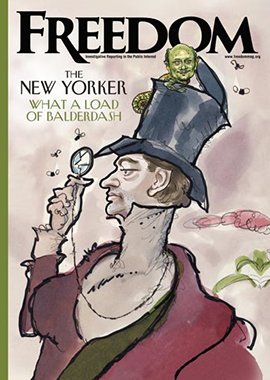
The next day, a similar press release from the governor’s office lauded the seizure of over $70 million worth of illegal cannabis through California’s Unified Cannabis Enforcement Task Force (UCETF) in the past three months and over $191 million worth since the beginning of the year. The governor said, “Our communities are safer with over 42,000 pounds of illicit cannabis taken off the streets since the beginning of the year.”
But it’s all a drop in the bucket for those on the ground, like Mendocino County Sheriff Matt Kendall. California’s black market pot industry is so ginormous that those actually in the heat of the battle give such self-congratulatory jargon a head shake and an eye roll.
The seizing of more than 750,000 cannabis plants and arrests in 36 counties by EPIC sounds impressive, but not when one realizes that just one county—Siskiyou—alone produces 12 to 16 million illegal plants per year.
Seizing a scintilla of black market plants and then praising the work done is like bragging about fighting a forest fire with a squirt gun.
“The black market is as big and bad as ever.”
“Don’t get me wrong, I love when those guys [state law enforcement officers] show up to help,” Sheriff Kendall says, “but I would need 50 police officers for 50 days to even begin putting a dent in it.” Kendall pointed out that in just one part of his county—the 35-square-mile Round Valley alone—there are an estimated 1 million illegal marijuana plants.
“The black market is as big and bad as ever,” he said.
California legalized weed in 2016 in a move that promised “to tax the growth and sale of marijuana in a way that drives out the illicit market.”
The opposite happened.
Rather than being driven out, the illicit market thrived (they pay no taxes), while the legal market was taxed and regulated. The legal weed companies owe the state more than $730 million in back taxes, nearly three-quarters of which will never be paid because the companies that owe them are out of business.
Then, stir in additional factors like the minor misdemeanor penalty for selling or transporting unlicensed marijuana, the almost comically limited law enforcement resources and manpower, and the pathetic fact that it is the underpaid laborers in the fields who get arrested during the raids and not their fat-cat bosses, the true villains, and you have a steaming stew of exasperation.
If we may back up just a bit and get some perspective, the question arises: Just what problem are we trying to solve?
This is marijuana we’re talking about. And this is not your grandma’s Woodstock marijuana, which contained 1 percent THC—the substance that provides the “high.” Modern technology has souped up marijuana. Your average plant now contains 16 percent THC, sometimes as much as 30 percent. That’s 30 times more hallucinogenic, toxic punch than Summer of Love traditional marijuana.
That’s up to 30 times more impairment of judgment, slow-down of reflexes and paralysis of reaction time. Small wonder that today’s marijuana users have a 92 percent higher chance of getting into any vehicular accident while under the influence, and that fatal accidents from driving stoned are up 110 percent.
So stay at home and don’t drive when toking. How bad can it be when it’s legal in so many places?
When demand vanishes, so does the product and its industry. So went the buggy whip industry, the corset and the fax machine.
Unfortunately, no one informed your lungs, heart or brain cells that there’s no harm in marijuana. According to Foundation for a Drug-Free World, a nonprofit public benefit corporation sponsored by the Church of Scientology, just a teaspoon of the ocean of ills associated with the drug includes memory lapses, fear of being followed, hearing or seeing things that aren’t there, difficulty sorting out reality from delusion, panic, increased risk of heart attack and stroke, coordination problems, sexual problems and hallucinations. Longer-term risks include abnormal cell division leading to premature births, birth defects, mental abnormalities and increased risk of leukemia in children, antisocial behavior like stealing, intimate partner violence and the very real potential of “graduating” to addiction and opiate abuse.
Instead of patting themselves on the back for fixing a leaky faucet when the floodwaters have reached the roof, California must take a hard look at the “solution” it implemented.
The measure opened the floodgates for those with black market dreams. Simply dodge the taxes and licensing fees and shrug at the wrist-slap penalties for getting caught (that is, if you ever do get caught, given the state’s lack of law enforcement personnel). Result: California becomes a true Golden State for illegal pot growing. An already untenable situation became worse.
Demand drives a business—black market or otherwise—because you are providing something that people want. When demand vanishes, so does the product and its industry. So went the buggy whip industry, the corset and the fax machine.
Prevention—the best kind of prevention, the kind that doesn’t need to be enforced with threats and penalties—is the kind fostered by education.
Advocates of drug prevention have had success when people, particularly young people, are informed what they’re getting themselves into with drugs—before they get into them.
Foundation for a Drug-Free World has distributed more than 150 million drug education prevention booklets, with information about virtually every drug under the sun, from pot to party drugs, and has held tens of thousands of drug awareness events across the globe.
The intent is to educate rather than enforce and, once informed, the person can decide on his or her own not to use drugs.
Something can be done about your runaway cannabis problem, California.
And that something is real and lasting prevention.
Unless you actually like trying to put out the sun with gasoline.






















